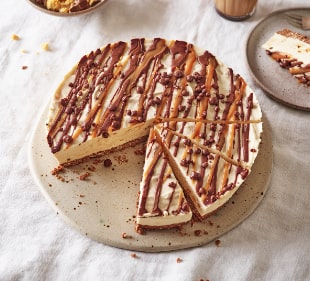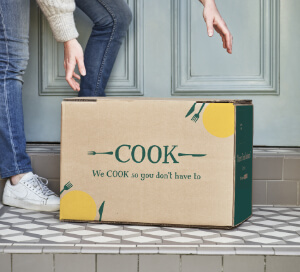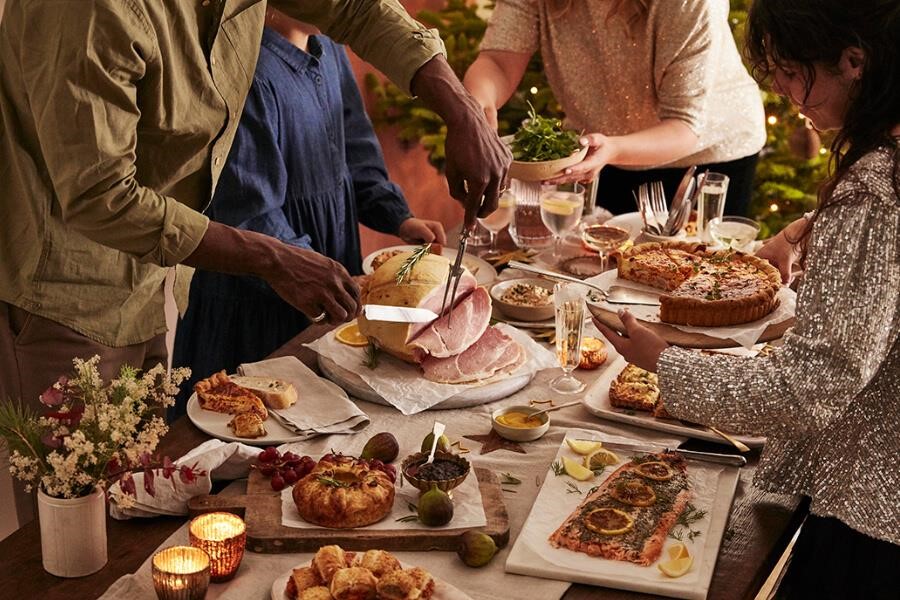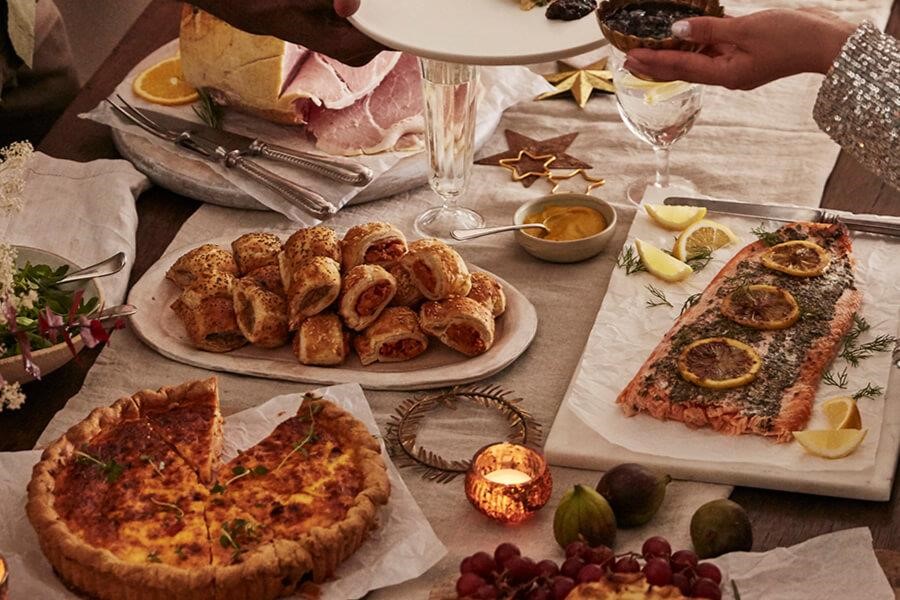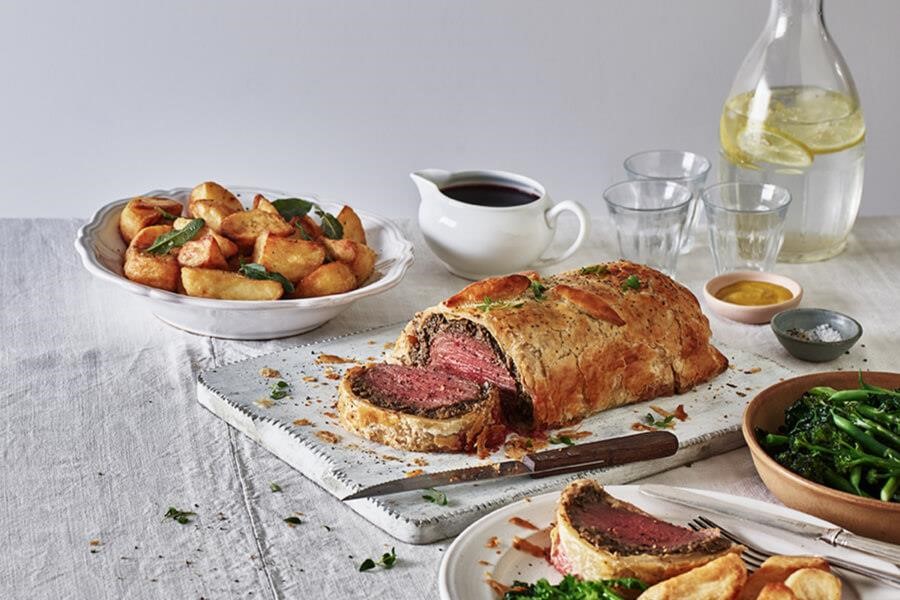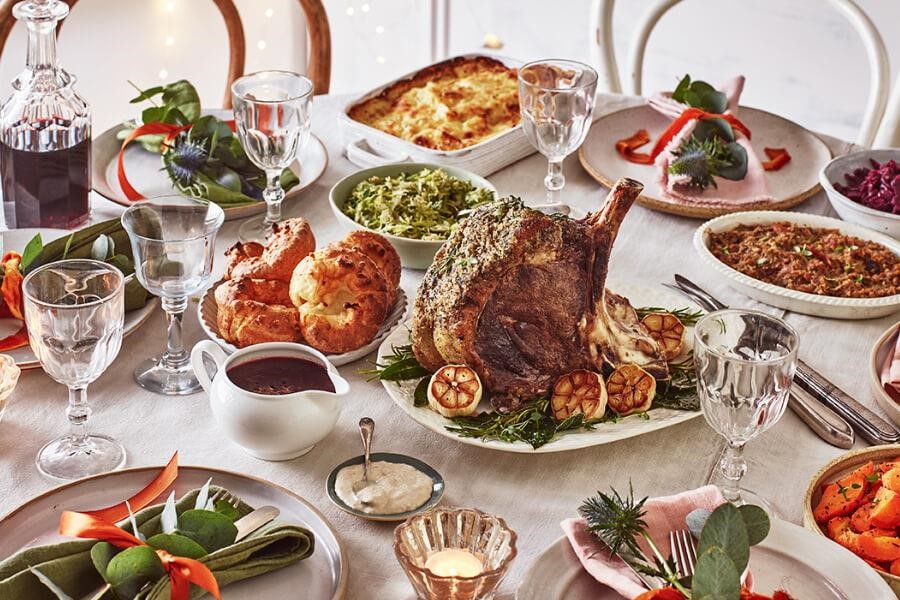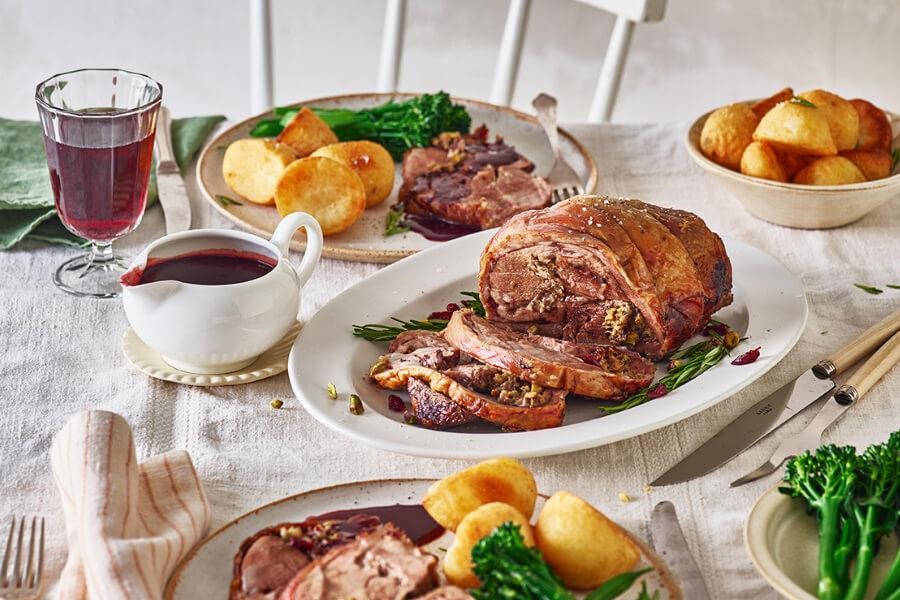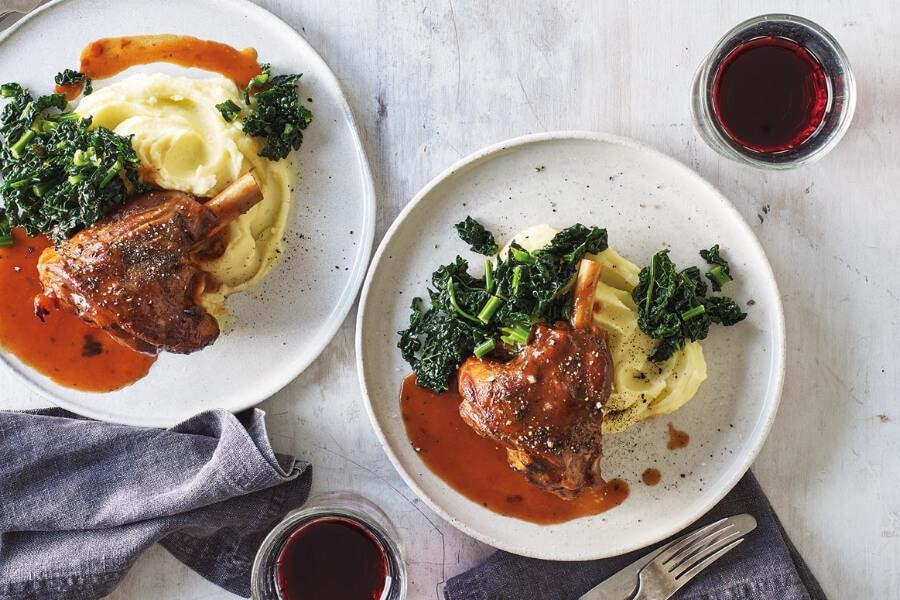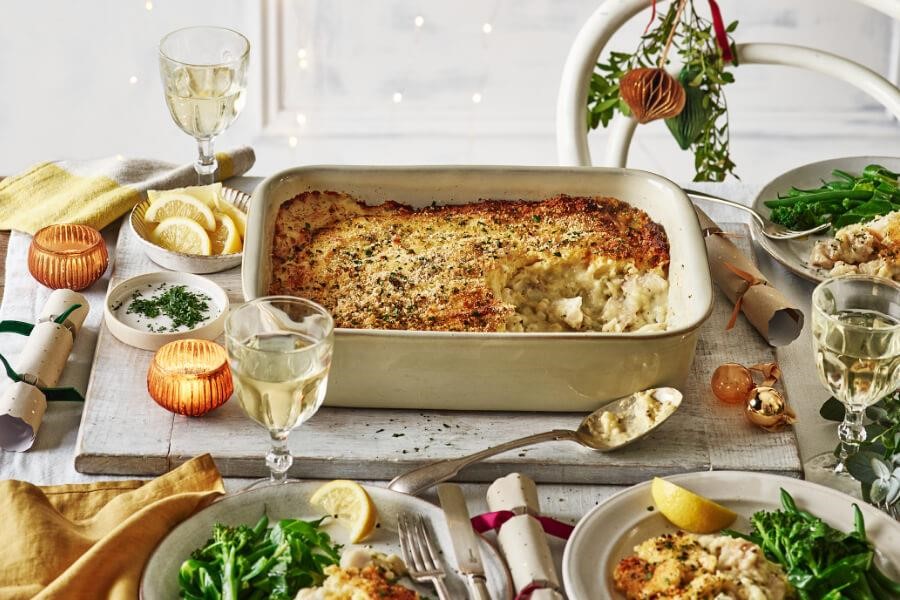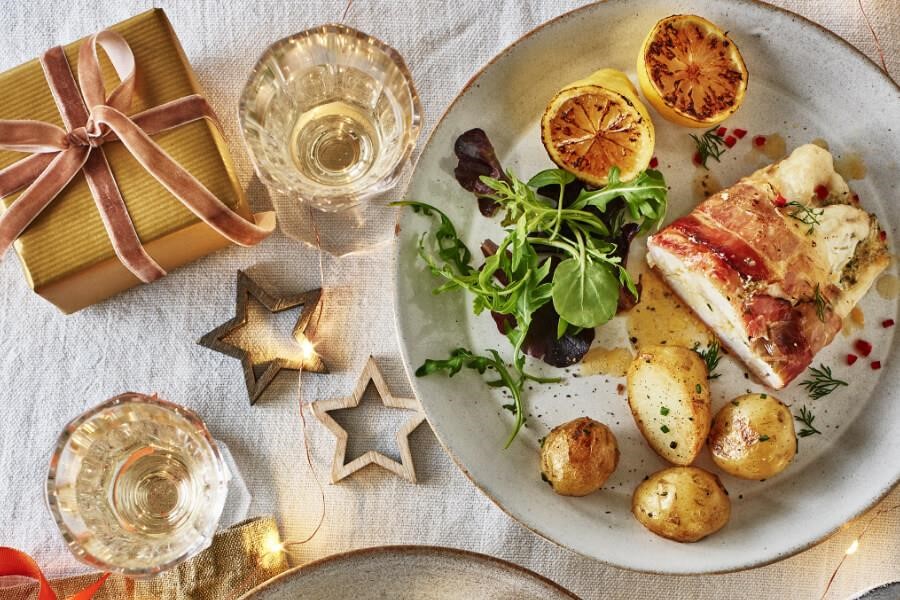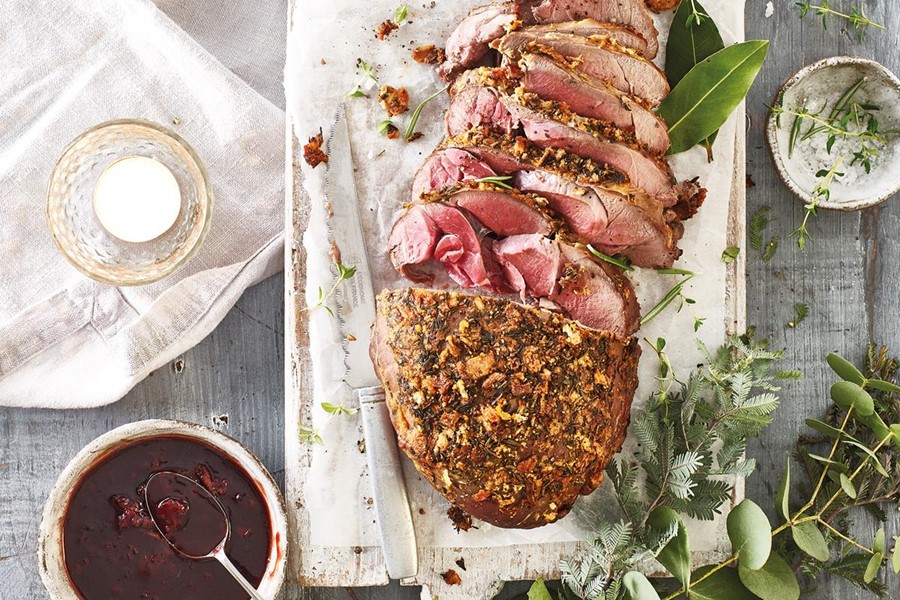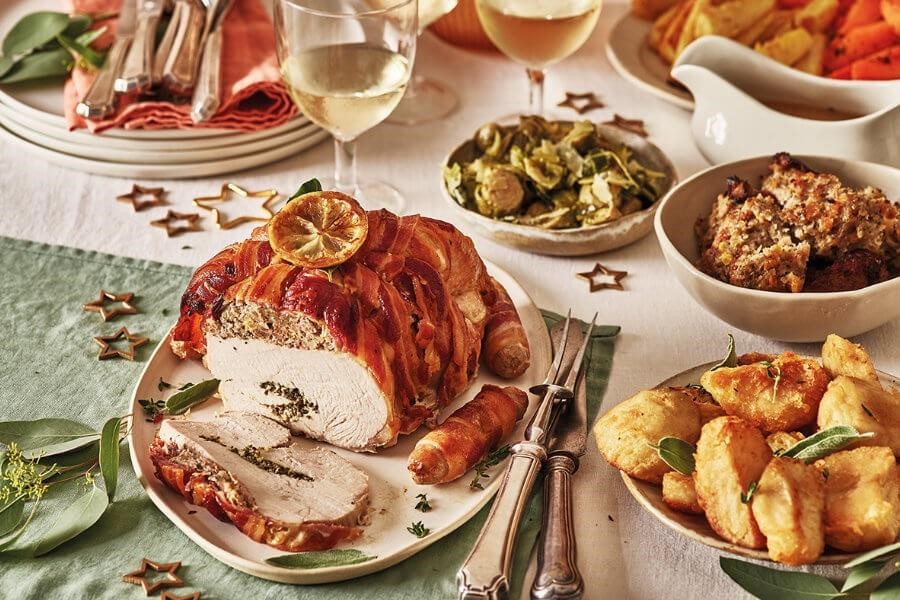
Alternative Christmas Dinner
Are you thinking of having something other than the traditional turkey for Christmas? Here’s a run through of some great alternative Christmas dinner ideas … and why turkey isn’t really that traditional at all.
What Roasts Can You Have on Christmas Day?
Although turkey remains the most popular centrepiece for a Christmas dinner, it wasn’t always that way, so why not spice up your lunch on December the 25th with something a little different? Below are a range of Christmas dinner alternatives to delight your guests. They are all meat or fish, but we also have a range of alternative vegetarian Christmas dinner options..
The key ingredient for your Christmas roast is, of course, the meat. Go to a supplier you trust or a decent butcher and don’t be afraid to ask where it came from. Great taste and great animal welfare go hand in hand, so if you’re not convinced, vote with your feet. We always include sourcing information on our website, as we firmly believe that it should be publicly available. If a company won’t share where their ingredients are from, ask yourself why. There’s loads of different alternatives to turkey for Christmas, so don’t be afraid to explore other meats too!
It’s the most important meal of the year, so be generous in your estimations when it comes to portion sizes, not forgetting that leftovers are all part of the joy of Christmas.

A Note on Resting
Meat should never be served straight from the oven. Resting meat is essential, but so many people still fail to do it. Whatever alternative Christmas dinner ideas you finally go for, resting the meat is important unless you’re going for a veggie only option!
Whatever alternative Christmas dinner you go for, cover your roast loosely in silver foil and clean tea towel, if you like, and leave it. It will continue to cook with the residual heat (which is why, for beef, you should take it out while it’s still a little pink). All the juices will disperse around the meat and you’ll end up with a more succulent, juicy cut that’s easier to carve.
Don’t worry about it going cold – it shouldn’t be served really hot anyway – and the gravy or sauce will add some heat back to the dish.
And remember not to dish lunch onto cold plates.
Pork
A Christmas essential in Scandinavia, roast pork with crackling is a great option. It will need a good festive stuffing, ideally something other than the traditional apple, sage and onion.
For the sides, roast pork is great with big flavours. Braised Red Cabbage, Shredded Brussels Sprouts & Buttered Leeks and Maple & Thyme Roast Parsnips are a must, and consider having Dauphinoise potatoes instead of the usual roasties. Pigs in blankets, however, may prove to be too much pork on one plate.
Apple sauce is, of course, the traditional condiment for roast pork but Cranberry Sauce with Port & Orange is actually a terrific option too and perfect for Christmas Day. A delicious cut of pork is the perfect Christmas turkey alternative, so keep a look out when you go to your local butchers.
Goose
If you need more alternatives to turkey for Christmas and enjoy a traditional Christmas then goose is the only way to go. Finding a goose can be hard, and it will likely be more expensive and feed fewer people than a turkey of the equivalent weight. It must be said they are also tricky to cook, as the meat is quite lean and dries out quickly. If you’ve never done it before, have a trial run as a Sunday roast one week in the run up to Christmas.
But cook it well and goose can be truly delicious. What’s more, the liver makes incredible pâté, the skin will be gloriously crisp, and you can use the fat to make some epic roast potatoes. As for sides, you can go with the traditional festive ones … with the addition, we’d suggest, of a good apple sauce with spices and lemon.
Beef
Beef is the most popular alternative Christmas dinner meat. Make sure yours comes from a respected source and go for a special joint like fore ribs, sirloin or fillet (and, of course, wrap the latter in pastry and you have a Beef Wellington).
Ask how guests like their beef before roasting, but a good rule of thumb is to aim for medium – the slices nearer the end will be well done and those in the middle rare, if all goes well. What’s essential is you rest the joint for around an hour – yes, a full hour. Just wrap it up in silver foil and a clean tea towel or two and it will stay hot. It really will make all the difference.
For the sides, you’ll want a combination of beef-essentials like horseradish and Yorkshire puddings, and Christmas essentials like Brussels sprouts with chestnuts and Roast Potatoes.
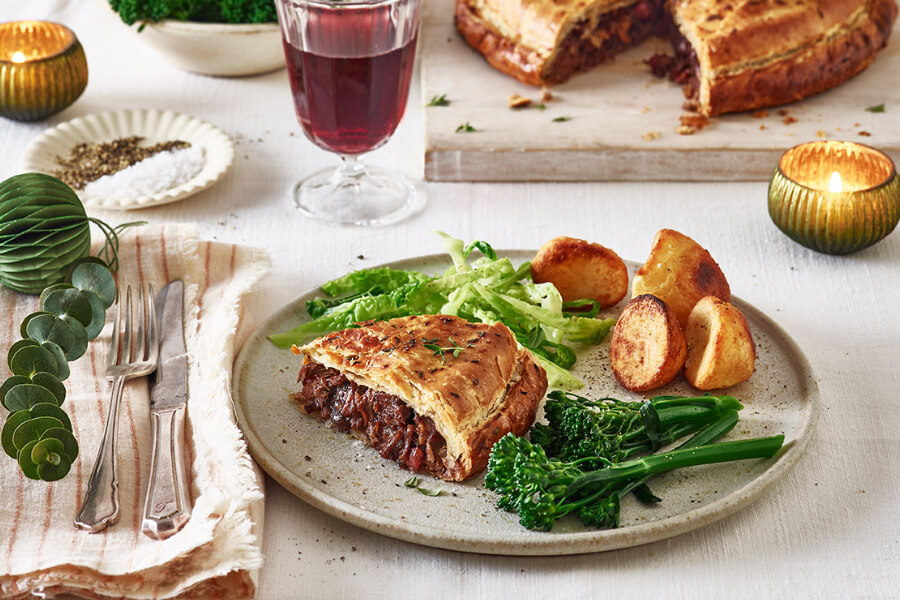
Duck
Duck is perfect for a more intimate Christmas, with the average one serving 4 or 5 people. It’s one of the easier alternative Christmas dinners to cook than goose, but you’ll still get crispy skin and all that lovely fat for your roast potatoes. Overall, goose is one of the best Christmas turkey alternatives if you want something a bit more luxurious.
Carving duck can be tricky so, unless you have a boneless duck, try just pulling meat off the bone with tongs or (carefully!) with fingers. Serve with sprouts, roast potatoes, parsnips and perhaps some Carrots with Orange & Thyme.
Venison
Now we’re talking. A haunch of venison is a seasonal delight. Venison is a big flavour, so it needs a big sauce. We recommend a red wine, sloe gin, blackberries and juniper sauce.
Venison doesn’t take long to cook and should be a bit pink when you serve, so you’ll have to be on your game with the side dishes.
Brussels sprouts with streaky bacon and chestnuts are a must, along with the other traditional Christmas side dishes like parsnips and roast potatoes. Some serious green veg, like cavolo nero, is a great addition, too.
Lamb
While it’s more associated with Easter, you could also bring some spring into winter and serve roast lamb as an alternative to turkey at Christmas. You can make it more festive by adding the traditional sides, as sprouts, carrots, parsnips and roasties go great with lamb. As well as garlic and rosemary, the classic additions for lamb, you’ll find that red cabbage, cloves, orange and cranberries work, too.
As with beef, lamb should be well rested and a bit pink in the middle – the slices at the end will be perfect for any guests who prefer it well done.
Fish & Seafood
This might sound like a bridge too far, but fish is a traditional Christmas lunch in many countries around the world. By opting for a fish alternative Christmas dinner, you can help buck the traditional trend and really make Christmas your own!
A good side of salmon makes for an impressive centrepiece. At COOK, we make one with lemon and dill, that’s always very popular at Christmas. One obvious benefit of this alternative to Christmas dinner is it’s so versatile. If you’re having it hot, try it with buttered new potatoes and green beans. Cold, it’s great with roasted baby beetroot and a watercress salad.
If you want to really dial it up, try a cold seafood platter with salmon pâté, smoked salmon, prawns, lobster tails and crab. You can serve with good fresh bread, lemon wedges, roasted garlic mayonnaise, blini, sour cream, a lemon and dill sauce … endless delicious options await! This can be served as not only a sit down lunch but also as part of a Christmas buffet.
If you’d rather have hot fish, you’re not short of possibilities, like whole roast turbot, Lobster Thermidor Fondant Souffles, Salmon en Croute or monkfish with cranberries.
With a little care, fish can be as festive as turkey; you’ll avoid that post-Christmas lunch slump in front of the Bond movie!

Christmas Lunch - A Brief History
What we think of as the traditional British Christmas Lunch is, in fact, relatively new and about as international as it gets. Turkeys are native to America, and only become popular at Christmas here in the 19th Century. Potatoes are from Peru. Carrots are from the Netherlands. Brussels Sprouts are from … well, you can probably work that out for yourself. And all the Christmassy extras like ginger, cinnamon, cranberries, nutmeg and figs are all from overseas, too.
In the Middle Ages, Christmas was hardly celebrated at all in Britain. In fact, the only thing from this period that we recognise today is accosting locals for food or drink during this barren season … which has morphed into the rather gentler tradition of carol signing.
Perhaps the most traditional Christmas meal is Pig’s head and mustard. Thankfully that’s fallen out of fashion, but roast goose, pork and beef were all go-to options at one time. It wasn’t until the Victoria era that Prince Albert’s influence introduced us to Germanic traditions like Christmas trees, mulled wine, fruitcake and, later, advent calendars.
Christmas Day was finally made a Bank Holiday in 1834, only nine years before the publication of Charles Dicken’s A Christmas Carol, which has played a huge part in cementing the Victorian interpretation of Christmas as the traditional way of celebrating. This was around this time that turkey – largely because of its size – became a popular choice among families for lunch on the 25th December.
In short, you can throw out the rule book when it comes to cooking on Christmas Day. Below are some of our favourite options … although we won’t be advocating the traditional Christmas lunch in Japan: a bucket of fried chicken. We have our limits.












